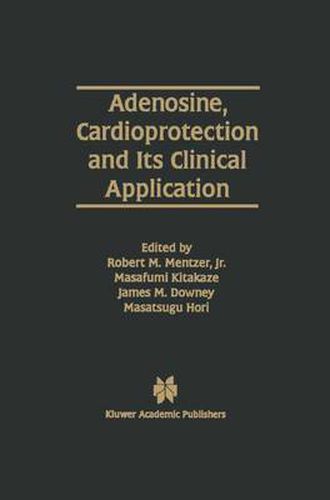Readings Newsletter
Become a Readings Member to make your shopping experience even easier.
Sign in or sign up for free!
You’re not far away from qualifying for FREE standard shipping within Australia
You’ve qualified for FREE standard shipping within Australia
The cart is loading…






This title is printed to order. This book may have been self-published. If so, we cannot guarantee the quality of the content. In the main most books will have gone through the editing process however some may not. We therefore suggest that you be aware of this before ordering this book. If in doubt check either the author or publisher’s details as we are unable to accept any returns unless they are faulty. Please contact us if you have any questions.
The growth in the number of articles on adenosine cardioprotection in the late-1990s has been related in large part to the hypothesis that adenosine plays a role in ischemic preconditioning. Ischemic preconditioning is the phenomenon in which a brief period of ischemia (and reperfusion) prior to a more prolonged occlusion reduces myocardial infarct size. This form of myocardial protection has received much interest because ischemic preconditioning has been shown to be the most potent means of reducing infarct size in all animal models so far tested. Since 1990 the principal focus of adenosine cardioprotection research has centered on the role of adenosine receptors. It is currently thought that adenosine protects the ischemic heart primarily via the activation of adenosine A1 receptors located on the cardiac myocytes. Adenosine is used clinically for terminating supraventricular tachycardia, and as a diagnostic tool in coronary imaging, and has been used postoperatively for blood pressure control after heart surgery. There are also recent reports that adenosine may be safely tolerated and a potentially beneficial additive to cardioplegic solutions during open heart surgery in humans. There is even evidence that ischemic preconditioning may occur in humans under various clinical situations. This volume contains chapters from contributors to the first three symposia on Adenosine, Cardioprotection, and its Clinical Application . All aspects of adenosine cardioprotection and ischemic preconditioning, including potential mechanisms and clinical applications are discussed. The reader should find this book to be a useful source of information on these topics, as well as a guide to future experiments.
$9.00 standard shipping within Australia
FREE standard shipping within Australia for orders over $100.00
Express & International shipping calculated at checkout
This title is printed to order. This book may have been self-published. If so, we cannot guarantee the quality of the content. In the main most books will have gone through the editing process however some may not. We therefore suggest that you be aware of this before ordering this book. If in doubt check either the author or publisher’s details as we are unable to accept any returns unless they are faulty. Please contact us if you have any questions.
The growth in the number of articles on adenosine cardioprotection in the late-1990s has been related in large part to the hypothesis that adenosine plays a role in ischemic preconditioning. Ischemic preconditioning is the phenomenon in which a brief period of ischemia (and reperfusion) prior to a more prolonged occlusion reduces myocardial infarct size. This form of myocardial protection has received much interest because ischemic preconditioning has been shown to be the most potent means of reducing infarct size in all animal models so far tested. Since 1990 the principal focus of adenosine cardioprotection research has centered on the role of adenosine receptors. It is currently thought that adenosine protects the ischemic heart primarily via the activation of adenosine A1 receptors located on the cardiac myocytes. Adenosine is used clinically for terminating supraventricular tachycardia, and as a diagnostic tool in coronary imaging, and has been used postoperatively for blood pressure control after heart surgery. There are also recent reports that adenosine may be safely tolerated and a potentially beneficial additive to cardioplegic solutions during open heart surgery in humans. There is even evidence that ischemic preconditioning may occur in humans under various clinical situations. This volume contains chapters from contributors to the first three symposia on Adenosine, Cardioprotection, and its Clinical Application . All aspects of adenosine cardioprotection and ischemic preconditioning, including potential mechanisms and clinical applications are discussed. The reader should find this book to be a useful source of information on these topics, as well as a guide to future experiments.